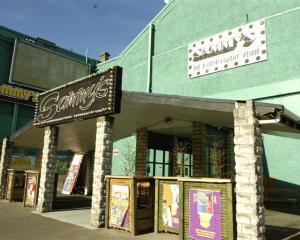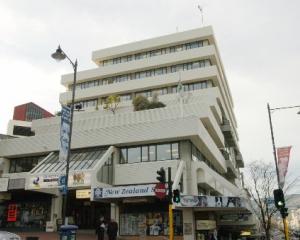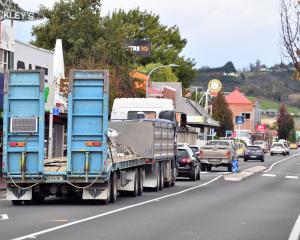Warrington residents are fed up with boy racers tearing up their domain, Taieri residents are fed up with the noise and the mess they leave behind, and police are concerned for the safety of those participating in Dunedin's Friday night "drag train".
Boy racers, on the other hand, are fed up with being "treated like criminals", want a place where they can legally do their thing and say if they are banned from one place, they will just go to another.
At the centre of most of the concerns of the police and the complaints they receive from the public is the behaviour of drivers in the drag train, which leaves from Andersons Bay Rd at midnight most Fridays.
Between 80 and 100 or more vehicles and up to 400 people are involved each week, driving in convoy to a destination arranged by mass text message.
At the destination, drivers play music loudly, race, do burn-outs and skid their cars, often leaving behind skid-marks and rubbish, including food containers and smashed bottles.
The boy racers, or "car enthusiasts" as self-appointed spokesman Robb Newall (18) says they prefer to be called, say they want a place where they can do their thing in a supervised environment without disturbing other people, but police say that has been tried and the problematic behaviour associated with illegal street-racing still happened in other places.
Mr Newall has written to the Dunedin City Council about it, but a spokesman said finding boy racers a place to race was not being considered.
Asked if the introduction of a bylaw banning cruising in convoy in Dunedin was a possibility, council planning and environment committee deputy chairman Cr Neil Collins said it was not on the agenda and was unlikely to be, unless it was raised by council staff or the police.
Local councils have had the powers to introduce such bylaws since December.
The Christchurch City Council has introduced an anti-cruising bylaw for the central city, banning cars from travelling in convoys or doing laps on certain roads at set times.
Offenders face a $1000 fine.
Initial reports indicate boy racers are being driven out of Christchurch City, and, although there have been reports of some displacement, the arrest of a large group outside the restricted area last month made it clear boy racers could not go elsewhere with impunity, Christchurch police said.
Thirty-eight people were charged with unlawful assembly after 39 cars and 140 people gathered near a motorway overbridge.
Mr Newall said even if a ban was introduced in Dunedin, boy racers would just go somewhere else.
He added they would "run" before letting anyone crush their car, which would put more lives at risk.
Dunedin-Clutha area tactical response manager Inspector Alastair Dickie said police were watching how the Christchurch bylaw was functioning, but it was not clear how something similar would work here.
The illegal street-racing issues Dunedin faced were quite different from Christchurch's, he said.
The attitude of those involved in Christchurch was more confrontational - police had been attacked and the mayor had been threatened by drivers, while Dunedin's racers were younger and more compliant.
Christchurch's problems were mainly on urban streets while the main issues with boy racers in Dunedin were the illegal racing and the irritation and damage they caused in rural areas.
It was a constant game of cat and mouse with the drag train, as drivers changed direction, Insp Dickie said.
Police kept a close eye on the train, and would have something to do with it most Friday nights, sometimes holding targeted operations.
While drivers in the train were largely compliant, there were inherent safety issues with large groups of cars travelling in convoy, particularly when there were four or five people in every car and one in 10 cars was not safe, as was the case when police checked all 82 cars on one recent drag train.
"It's a recipe for disaster."
Mr Newall said he and other boy racers were unhappy at being pulled over en masse by police in that operation.
"It was disrespectful to the public and to us young car owners. [They] made us look like wild animals and trapped us in a cage."
But Insp Dickie made no apologies, saying the purpose of the operation was to ensure vehicles and their occupants were safe.
With so many people involved, the risk of deaths or serious injury was great if there was a high-speed crash.
Officers had clocked cars in the drag train travelling faster than 170kmh on the Southern Motorway and on the Taieri Plain.
As it turned out, 14 of the cars were ordered off the road because of mechanical faults - mainly bald rear tyres.
Five had a modified suspension that was not certified.
It was not pleasant for any emergency staff to have to extract dead and injured people from crashed vehicles or to have to knock on parents' doors to tell them their son or daughter had been killed, Insp Dickie said.
"We are not here to spoil the fun of our young people, but safety is a priority for us and a number of these young people are pushing the boundaries."












